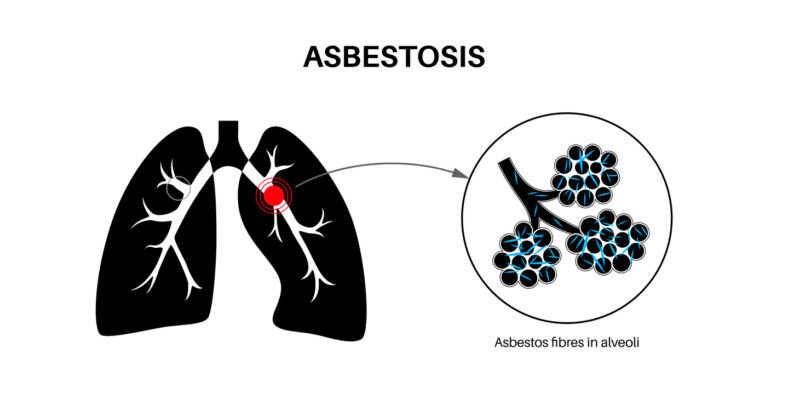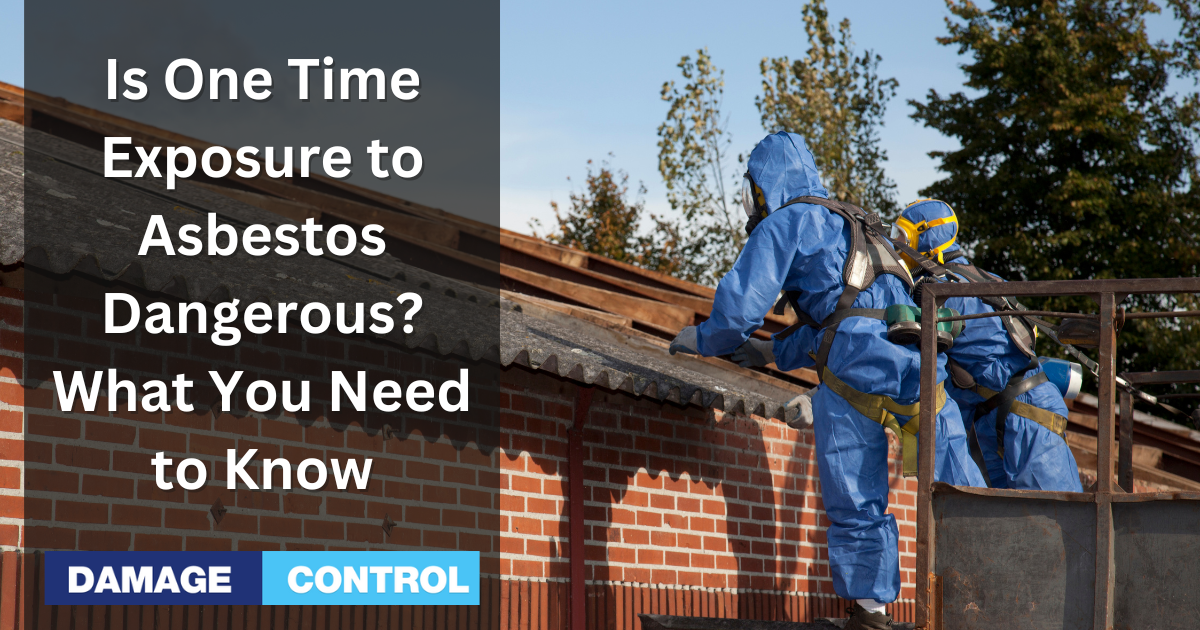Asbestos, a heat-resistant mineral used extensively in construction until the 70s, has a dark side. It's a carcinogen, and even brief contact can pose health risks, including lung cancer, mesothelioma, and asbestosis.
Are you concerned about a single exposure? It's true – even one encounter can be hazardous. But fear not, it doesn't mean disaster is imminent. The risk hinges on many factors like exposure duration, asbestos type, and personal health.
Suspect you've encountered asbestos? Don't hesitate to get medical help. While there's no outright cure for asbestos-triggered ailments, early detection and management can mitigate the disease's advancement and enhance your life quality.
Next, we'll delve into the specifics of one-time asbestos exposure, discussing health risks, symptoms, and preventive measures. Your safety is paramount, and knowledge is your greatest shield.
What is Asbestos?

Asbestos, a collection of naturally found minerals, is known for its insulating and heat-resistant characteristics. Composed of tiny airborne fibers, they can infiltrate your lungs when disturbed and cause gradual damage leading to health complications.
Asbestos is found in common use in construction materials like insulation, ceiling tiles, and roofing. Its usage was widespread, from automotive parts to household items like hair dryers and ironing board covers. Though many countries have curtailed asbestos use, it lingers in older structures and goods.
Inhaling asbestos can invite health problems like lung cancer, mesothelioma, and asbestosis. Your health's susceptibility to these diseases hinges on exposure duration, quantity, smoking habits, and age.
Remember, even a one-time brush with asbestos can pose risks, triggering health concerns in the long run. Whenever you deal with asbestos-bearing materials, it's imperative to don protective gear and adhere to safety procedures.
How Does Asbestos Exposure Occur?
Coming into contact with asbestos can happen in various situations – through your job, your environment, or even by accident. The main culprit is breathing in asbestos fibers, leading to potential health issues, including cancer and lung disorders.
Job-related contact is the most common asbestos exposure pathway. Workers in specific sectors like construction, shipbuilding, and car repair face heightened exposure risk due to asbestos' frequent use. Those handling asbestos-infused materials like insulation, roofing, and flooring face higher exposure risks.
Environmental exposure happens when asbestos fibers from natural sources like rocks, soil, or man-made materials get into the air. Those residing near asbestos mines or factories producing asbestos-infused products have a higher environmental exposure risk.
Accidental contact may happen if asbestos-infused materials get disturbed, like during renovation or demolition, releasing fibers into the air. Those residing or working in buildings with such materials face accidental exposure risk.
Importantly, not all asbestos-infused materials pose a danger if left undisturbed. Only when these materials are damaged or disturbed that asbestos fibers get airborne.
Health Effects of Asbestos Exposure

The health risks from asbestos exposure, including lung cancer, mesothelioma, and asbestosis, can be severe. The gravity of these health effects can vary based on exposure duration and frequency, asbestos fiber type, and individual susceptibility.
Inhaling asbestos fibers can lead to lung damage over time as they get lodged in the lung tissues. This damage can eventually result in lung cancer, which typically takes two to three decades to develop post-exposure. Mesothelioma, a rare cancer that affects the lungs, chest, or abdomen linings, is almost exclusively linked to asbestos exposure. Asbestosis, a chronic lung ailment, can cause symptoms like shortness of breath, coughing, and chest discomfort.
Asbestos exposure can also elevate the risk for other cancers, like those of the larynx, ovaries, pharynx, stomach, and colorectum. The probability of developing these cancers is heightened in individuals exposed to high asbestos levels over extended periods.
However, it's crucial to remember that not everyone exposed to asbestos develops health issues. Yet, the risk for asbestos-related diseases increases with exposure intensity and duration.
If you've been exposed to asbestos, make sure to discuss your risk of potential health issues with your healthcare provider. They may suggest routine check-ups or screenings to monitor your lung health.
Is One Time Exposure to Asbestos Dangerous?
Regrettably, exposure to asbestos can result in significant health challenges, including lung cancer, mesothelioma, and asbestosis.
A common query is the risk associated with one-time asbestos exposure. While there is no safe asbestos exposure level, the risk for an asbestos-related disease escalates with the intensity and length of exposure. Nonetheless, a singular encounter with asbestos fibers can pose a health hazard.
Asbestos fibers are minuscule and can be easily breathed in or swallowed. Once in the body, these fibers can lodge in the lungs or other organs, inducing inflammation and scarring over time. This can lead to respiratory issues like shortness of breath, coughing, and chest discomfort, with symptoms potentially taking decades to manifest.
It's crucial to acknowledge that the risk for asbestos-related diseases is not confined to those directly handling asbestos-containing materials. Family members of workers exposed to asbestos can also be in danger, as asbestos fibers can hitch a ride home on clothing and other items.
If you think you've been exposed to asbestos, it's imperative to consult your doctor. They can help assess your risk for asbestos-related disease and recommend suitable testing and monitoring.

